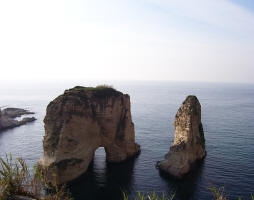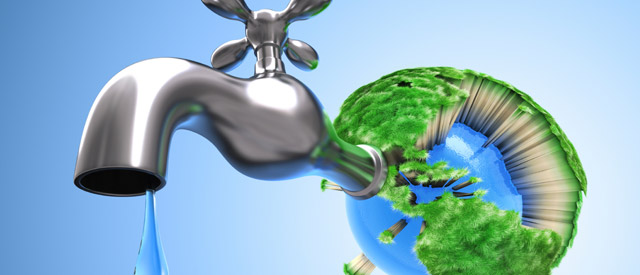 Tunisia: Agricultural Reform Challenges
Tunisia: Agricultural Reform Challenges
Tunisia has an advanced agricultural sector strategy, but many challenges remain to pursue greater environmentally and socially sustainable development, claims Marcello Cappellazzi.
One common feature of Mediterranean countries is the massive potential for agricultural reform. The challenges are similar for all countries on the shores of the sea, but the solutions vary considerably. Attempts have been made to harmonize the different agricultural policies and practices, with the ultimate goal of liberalizing the Euro-Mediterranean trade of agricultural products; however, Arab states on the southern shore and European Member States on the northern shore still have highly protectionist measures to ensure competitiveness and cushion the effects of price volatility inherent in agricultural markets.
In Tunisia, the agricultural sector represents an important part of economic and social life. In 2008, agriculture constituted 12% of the gross domestic product (GDP), employed around 22% of the total workforce and contributed 5.4% to overall economic growth (The Report, Tunisia 2009, Oxford Business Group). This is the result of over 30 years of internal reforms and international agreements that boosted the competitiveness of Tunisian products in the domestic and international markets. This process started in 1986 when the government initiated a drastic economic transformation of the highly protected and regulated economy into a more open and market-oriented one (IFAD: Géographie, le secteur agricole et l’économie, Tunisia).
Tunisia is the world’s fourth-largest olive oil producer.
Considering that food exports now contribute 11% of Tunisian exports of goods and account for 26% of agricultural GDP, these reforms have had a significant effect, leaving room for further growth (ONAGRI: Economic aggregates of agriculture). The question is whether this process is socially and environmentally sustainable. The biggest constraint is represented by the Mediterranean water challenge: all countries around the sea are facing the effects of climate change and the exponential depletion of water resources in the region. The water used for agricultural purposes in some Arab countries in the Mediterranean region represents over 90% of water usage.
Irrigation has fostered agricultural production and, especially in Tunisia, this has helped boost cereal production to meet food security needs of the population. Despite this, yields are generally insufficient to meet domestic demand and over the past ten years the percentage of irrigated land over the total agricultural area has decreased.
There are five 5 bioclimatic zones in Tunisia distinguished by varied average rainfall: the wetlands ( > 800 mm ), the sub-humid areas ( 600-800 mm ), the semi-arid zones ( 400-600 mm ), the arid lands ( 100-400 mm ) and the desert ( < 100 mm ).
In 2009, cultivated areas covered more than 5 million hectares (ha) or 3% of the country (Arab Agricultural Statistics Yearbook 2010). Of these, 2 million ha are used for arboriculture (including 1.6 million ha of olive trees) and another 2 million ha consist of arable land (including 1.6 million ha of cereals) (APIA: L’agriculture Tunisienne). These figures represent well the two long-term priorities of Tunisian agriculture policy: promote export-oriented production (Tunisia is the world’s fourth-largest olive oil producer) and achieve greater self-sufficiency (especially concerning the production of cereals and livestock). Trends in food supplies show that the country is engaging in a nutrition transition as Tunisia already achieved in 2009 self-sufficiency with vegetables, fruits, poultry meat, eggs and dairy products (FAO: Nutrition Country Profiles, Tunisia). Despite the financial incentives aimed at encouraging cereal production, domestic producers can only meet 28% of national demand. This is still a remarkable achievement given that food dependency, especially for cereals and livestock products, is endemic to the Mediterranean region.
The goal of self-sufficiency is geared towards the achievement of greater food security in Tunisia. The challenge is the constant and exponential migration from rural areas to urban peripheries. From 1990 to 2003, the percentage of people living in rural areas decreased from 42.1% to 32.6% with 27% of the poorer populations living in the countryside (IFAD: La pauvreté rurale en Tunisie). The isolation of rural areas, the lack of opportunities in terms of diversification of activities and the absence of arable land are among the leading causes of rural poverty in Tunisia. Trade liberalization of the agricultural sector will further exacerbate this problem since more labor will be displaced from rural to urban areas, highlighting the paradox of progress in such scenarios (Shobha Shetty (2006), Water, Food Security and Agricultural Policy in the Middle East and North Africa Region – The World Bank).
Market liberalization of agricultural products does not take into account the raising domestic demand of food, which was after all a large cause of the Tunisian revolution in 2010-11. Tunisia is already self-sufficient in some products, but still relies heavily (47%) on wheat imports. The sharp increase in international food prices has not translated into higher domestic prices only due to government intervention (GlObserver: Tunisia Agriculture Profile 2012). The policies implemented by the Tunisian government since the 1980s have increased agricultural output by 40% and with talks initiated in 2000 with the European Union Tunisia started seeking a free-trade agreement as part of the Barcelona Process that is meant to engage the entire Mediterranean region (Encyclopedia of the Nations, Tunisia – Agriculture).
The trade preferences negotiated with the European Union are largely under-utilized, especially for agrumes (oranges), a product that belongs to the traditional export trends of Tunisia. The Maltese orange of Tunisia is a typical product of Tunisia and it have been mostly exported to France over the last 50 years (Ministère de l’Agriculture, des Ressources Hydrauliques at de la Pèche, Maltaise de Tunisie).
The agrumes sector is characterized now by weak growth and difficulties in meeting rising internal demand while trying to remain competitive in the international arena. The export of the Maltese orange is carried out by a small number of limited producers, which makes the price of Tunisia’s oranges 30-50% higher than other oranges on the international market (IPEMED, Pour une organisation Euro-Mediterraneenne de la Production et des Echanges dans la Filiere Fruits et Legumes).
Trading activities represent another considerable potential for development in terms of improved quality and higher quantities of produce, upgraded processing, appropriate marketing and market geared certification (Rural21 (2012), Promoting Tunisia’s agriculture). One example is the organic label “Bio Tunisia”, launched by Tunisian government in 2010 as part of a strategy to develop organic agriculture. Tunisia is the leading North African country in terms of organic agriculture development: organic vegetable production rose from 4,000 metric tons in 2001 to more than 240,000 metric tons in 2009 (Lukas Kilcher and Samia Maamer Belkhiria (2011), Tunisia: Country Report). The new “Bio Tunisia” label allows the value and benefits of all organic products from Tunisia to be communicated to consumers both nationally and abroad. This strategy has led to a very positive outlook for organic agriculture, as there is an important growth policy and support mechanism in place.
| Contact information |
Marcello Cappellazzi is Assistant Researcher at Revolve.
|
|---|---|
| News type | Inbrief |
| File link |
http://www.revolve-magazine.com/home/2013/10/29/agricultural-reform-challenges/?goback=%2Egde_2641566_member_5800981408499384320#%21 |
| Source of information | REVOLVE Magazine |
| Subject(s) | AGRICULTURE , METHTODOLOGY - STATISTICS - DECISION AID , POLICY-WATER POLICY AND WATER MANAGEMENT , RIGHT , WATER DEMAND |
| Relation | http://www.semide.net/countries/fol749974/country108068 |
| Geographical coverage | Tunisia |
| News date | 30/10/2013 |
| Working language(s) | ENGLISH |
 you are not logged in
you are not logged in





